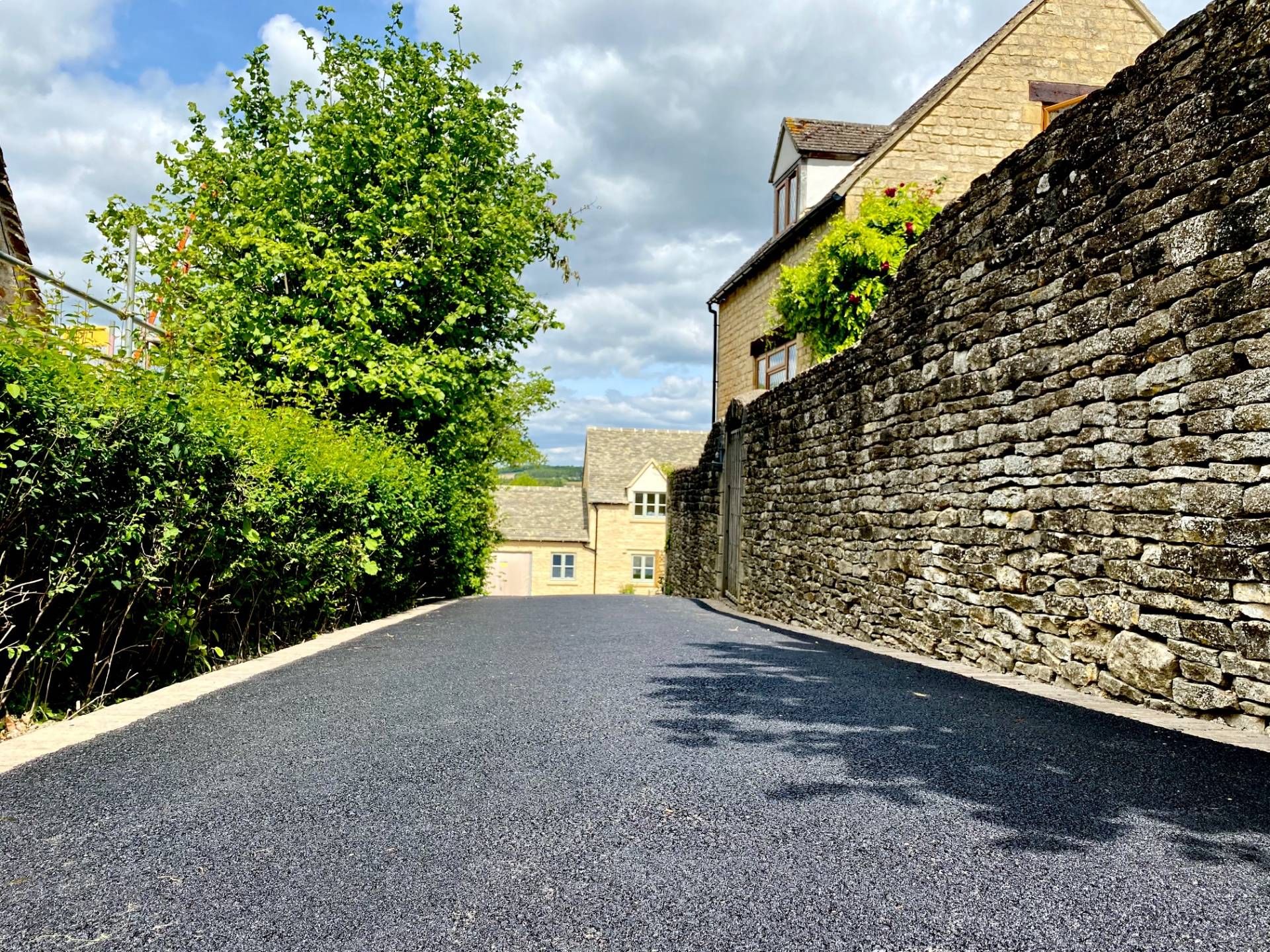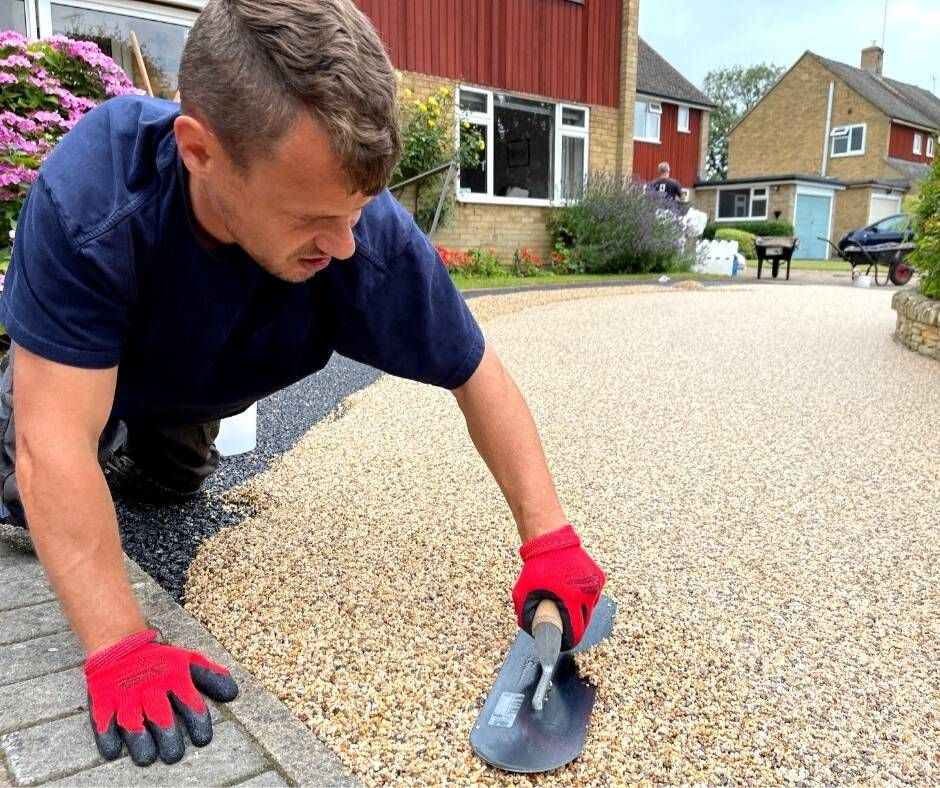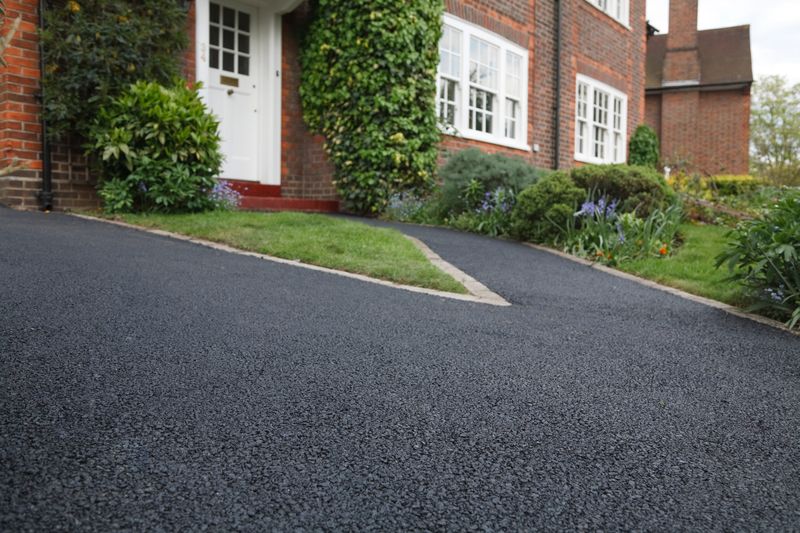
Do I need planning permission for a driveway?
Blog
You've finally made the decision - you want to get a new driveway. You know your home will look ten times better; you have a rough idea of the cost and might even have some companies in mind, so you're ready to take the next step.
So, what is the next step?
Before you can get too excited about your amazing new driveway, you have to cross the hurdle of permission. Yes, that's right - you can't just install a new driveway. Even if you have an existing driveway that you're wanting to change - there are legal steps you must take to comply with the highway laws. In this article, we will look at planning permission and why it might be needed when installing a new driveway or wanting to change an existing driveway.

What does planning permission look like?
Planning permission for a driveway is the approval required from the local planning authority before constructing or modifying a driveway on your property. It is a formal process that ensures your driveway adheres to local regulations, guidelines, and the overall planning objectives of the area.
When it comes to planning permission for driveways, there are several factors that may influence whether you need to obtain it or not. These factors can include the location of your property, the type of driveway you plan to construct, and any restrictions or regulations imposed by your local planning authority.
Some key considerations before we get into the specifics:
- Permeable Surfaces: In many areas, there are requirements for driveways to have porous surfaces or incorporate sustainable drainage systems (SuDS) to manage surface water runoff effectively.
- Front Garden Regulations: If you plan to convert a front garden into a driveway, there may be specific regulations regarding the amount of green space that must be retained or limitations on the size and design of the driveway.
- Listed Buildings and Conservation Areas: If your property is located within a listed building or a designated conservation area, there might be additional restrictions and guidelines to preserve the historic or architectural significance of the area.
- Proximity to Highways and Safety Considerations: Local planning authorities often consider the impact of a driveway on traffic flow, pedestrian safety, and visibility. They may impose specific requirements, such as the width of the access point or the provision of suitable turning areas.
- Remember - It's important to note that some types of driveways may fall under permitted development rights, which means they can be constructed without the need for planning permission. However, checking with your local planning authority is advisable to ensure compliance with all relevant regulations.
When is planning permission not required?
For us to better understand why planning permissions are required, it will be helpful to look at times when they're not necessary. The need for planning permission for a driveway depends on various factors, including the type of surfacing used, the drainage system in place, and the size of the driveway.
Here are three scenarios where planning permission may not be required:
1) The surfacing used
If the driveway is constructed using permeable surfaces, then planning permission may not be required. Let's take a look at some permeable driveway options:
- Gravel driveway
- Resin driveway
- Porous asphalt driveway
- Concrete block paving driveway
- Interlocking pavers driveway
- Some natural stone driveways
These types of materials have their pros and cons, and we always recommend you research what driveway material is best for you - both in terms of looks, efficiency and cost. You can check out more information on the types of driveways in our What is a Driveway? Article.
2) Drainage
If the rainwater that falls on the driveway is directed to a lawn or border for natural drainage, or if it drains to a soak away or Sustainable Urban Drainage System (SUDS).
- To ensure a driveway is fully permeable and compliant with the drainage requirements, the foundation, bedding mortar and grout must also be porous.
- A slope can be installed to ensure drainage is managed with the water falling down to a permeable surface to ensure heavy rain does not turn into surface water on your dream driveway (this can typically be seen on a tarmac surface).
3) Size
If the driveway is smaller than five square metres in area, then you may not require any permission to install one. This is because this type of driveway falls under the category of a "permitted development" in many areas. This is fine if you only need a small driveway for one parking space but can become an issue when wanting a larger driveway.
Permitted developments are small-scale projects that can be carried out without the need for planning permission. However, it's important to note that regulations regarding driveways can vary depending on the local authority and specific circumstances.
Permitted Development
Permitted development refers to certain types of building works or changes to a property that can be carried out without obtaining formal planning permission from the local planning authority. These developments are considered to have minimal impact on the surrounding area and are allowed under specific rules and regulations set by the government. It's worth noting that even though certain projects may fall under permitted development, they may still require prior approval or adherence to specific conditions.
When is planning permission required?
Now, let's look at when planning permission is required when getting a driveway installed.
1) The surfacing used
If you plan to pave an area for your driveway that is larger than five square metres and does not allow water to drain through a porous surface, you must apply for planning permission. Some services that are not porous and require permission are:
- Tarmac driveways: Tarmac prices may be tempting to a lot of people but it needs to be noted that a tarmac driveway can affect surface water drainage. Planning permission helps ensure that appropriate measures are taken to mitigate any potential impact on drainage systems and prevent flooding or other environmental issues. However, you can install permeable tarmac but it will cost you more.
- Imprinted concrete driveways: Concrete is impermeable, meaning it does not allow water to soak through. This can lead to increased water runoff and contribute to stormwater management challenges. Planning permission helps assess whether the proposed driveway includes appropriate drainage solutions or incorporates sustainable drainage systems (SuDS) to mitigate environmental impacts.
2) Additional Features
If your driveway involves altering the visibility on a road, such as removing or adding trees, walls, gates, etc, then planning permission is required.
Local planning authorities often regulate the appearance of residential areas to ensure consistency and visual harmony. Installing a gate that significantly changes the external appearance of your property may require planning permission to ensure it complies with local regulations and maintains the aesthetic character of the area.
Gates can affect access, visibility, and safety on roads or public spaces. Local authorities should ensure that the installation of a gate does not create hazards or obstruct the movement of vehicles, pedestrians, or emergency services. Planning permission allows them to assess any potential impact on traffic flow, sightlines, or neighbouring properties.
Dropped Kerb
Adding a drop kerb or driveway apron to your driveway may be necessary if you are expanding it. However, it's essential to remember that residents can only modify pavements or roads with proper authorisation.
Listed building
If your property is listed or falls under Article 4 directions, additional considerations come into play to protect historic structures and regulate planning decisions. It is crucial to ensure compliance with specific regulations and seek guidance from the appropriate authorities. This prevention is in place to preserve certain protected areas' historic or architectural significance.
If planning permission is required, you will need to apply to your local planning authority. The process typically involves providing detailed plans, paying applicable fees, and waiting for a decision.
To go about obtaining planning permission for a new driveway or existing surface, follow these steps:
Consult with Local Planning Authority: Contact your local planning authority to discuss your plans and determine if planning permission is required. They can guide the specific requirements and application process.
Gather Necessary Information: Prepare the required documents and information for your planning application. This may include site plans, design drawings, drainage considerations, and any other relevant details requested by the local planning authority.
Submit Application: Complete the planning application form your local planning authority provided and submit it along with the required documents and fees. Ensure that you adhere to any specific guidelines or deadlines provided.
Await Decision: The local planning authority will assess your application based on relevant policies, regulations, and considerations. They will decide on granting or refusing planning permission. The timeframe for receiving a decision can vary depending on the complexity of the project and local authority processes.
Planning Permission Costs
There is typically a fee associated with applying for driveway planning permission. The cost can vary depending on the local planning authority and the specific regulations of your area. According to the information gathered from the search results, the fee for driveway planning permission in the UK is £206. However, it's important to note that these fees may change over time and may vary in different regions.
It is important to consider planning permission costs when thinking of driveway ideas. While concrete and tarmac driveway prices are typically cheaper than other options like resin bound driveways and crushed stone per square metre, when you add in labour costs, equipment hire and installation costs for drainage to be possible you have to ask yourself what is more cost effective in the long run.

What to do next
Now that you have a better idea of what type of driveway requires permission, the next thing to do is plan out what you need to do to get the ball rolling.
Determine Your Needs: Assess your requirements and preferences for the driveway. Consider factors such as the size of the driveway, the number of vehicles it will accommodate, any particular features or design elements you desire, and budget constraints.
Evaluate Local Regulations: Research the local regulations and requirements related to driveways in your area. Check for any specific guidelines regarding dimensions, materials, setbacks, or permits that you need to comply with.
Design and Layout: Plan the design and layout of your driveway. Consider factors such as the driveway's shape, slope, and curvature, as well as any existing structures or landscaping that may need to be incorporated or modified.
Material Selection: Choose the appropriate material for your driveway based on your budget, aesthetic preferences, durability, and maintenance requirements. Common driveway materials include concrete, asphalt, gravel, pavers, or a combination of these.
Drainage Considerations: Ensure proper drainage for your driveway to prevent water buildup and potential damage. Evaluate the slope and grading of the site to direct water away from your property and into appropriate drainage systems.
Obtain Necessary Permissions: Check if you need to obtain any permits or permissions from local authorities to proceed with constructing your driveway. This may include planning permission, curb-cut permits, or any other relevant approvals.
Hire Professionals: Depending on the project's complexity, you may need to hire professionals such as architects, engineers, or contractors to assist with the design and construction of your driveway. Obtain quotes, review their portfolios, and choose reputable and experienced professionals.
Budget and Timeline: Establish a budget for your driveway project, including costs for materials, labour, and any additional features or landscaping. Create a realistic timeline, considering factors like weather conditions and the availability of contractors.
Construction and Maintenance: Once the necessary planning and preparations are complete, you can construct your driveway. Ensure proper installation, and consider ongoing maintenance requirements to keep your driveway in good condition.

Always Remember:
It is crucial to understand your local area's specific regulations and requirements, as they may vary. As you can see, planning permission is only sometimes required when planning a new driveway.
As long as you're understanding and up to date with the regulations in your area, you should be confident to easily plan your driveway.
Remember, the purpose of planning permission is to ensure that development is carried out in a controlled and sustainable manner.
If you still need to figure it out, consulting with a professional, such as an architect or planning consultant, can help you navigate the planning permission process correctly and meet all necessary obligations. You can check out information on Citizen's Advice and the Planning permission hub.
For more information on how we can help - check out our contact page. We would love to make sure you have the perfect driveway.












